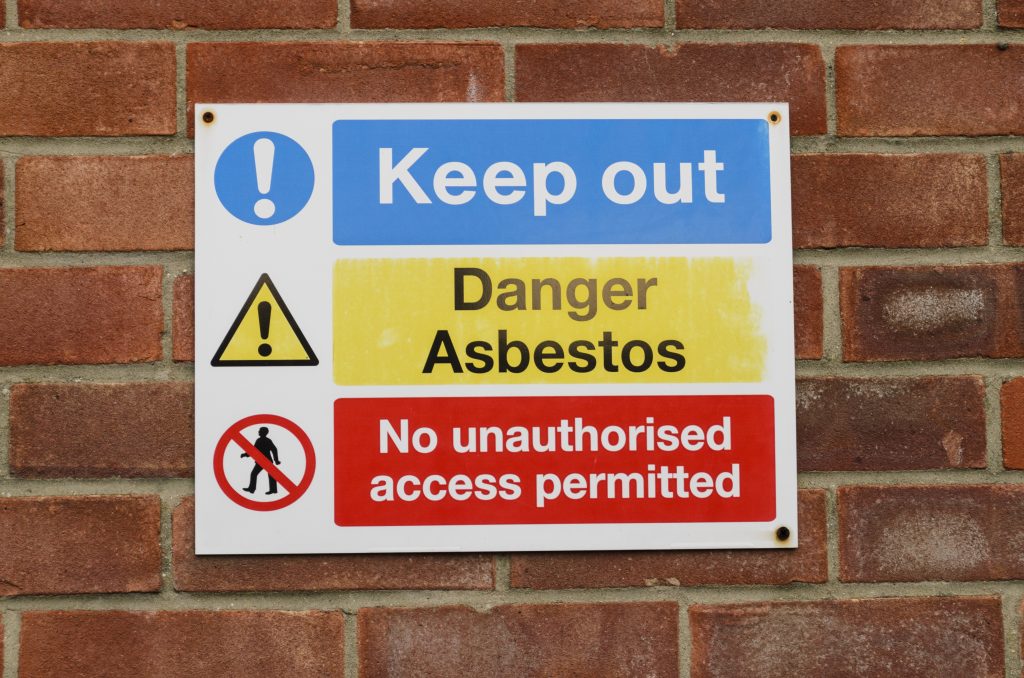Asbestos was once a revolutionary material, used for a huge number of applications, from home insulation to fireproof vests. From the 1950s to the 1990s, asbestos was commonplace in buildings around the UK and many other countries. However, as early as the 1920s, the danger of asbestos was being talked about.
These days, while asbestos is banned in the UK, it is still present in many buildings, including schools. These schools are often unable to get the necessary funding to rebuild temporary classrooms or buildings where asbestos is commonly found, so they must continue to function in the knowledge that asbestos, in some form, is present in their school building.

Is Asbestos Still Causing Problems?
In short, yes. Inhaling asbestos fibres can lead to a number of fatal conditions. However, the fibres typically lie dormant in the lungs for 30-40 years. This means that we have many people now presenting with asbestos-related conditions from contact with asbestos many years ago.
Mesothelioma is a relatively rare form of cancer, often caused by exposure to asbestos fibres. According to a study conducted in the early 2000s, only 5% of men with the localised disease survived their cancer for five years or more after diagnosis. While it is rare, the number of reported cases is expected to rise due to the timeline of heavy asbestos use.
Is There a Problem in Our Schools?
It is widely known that the military used asbestos in many ways around the time of the second world war. This means that many people presenting with asbestos-related diseases are veterans. However, it may not be so widely known just how heavily asbestos was used in schools. As the use of asbestos in building construction was not banned until 1999 in England, there is a huge number of schools with asbestos still present somewhere in their buildings.
Of course, there are rules and regulations put in place with the sole aim of protecting staff and pupils; however, a recent Government report has discovered that one-fifth of the schools which responded to the survey are ‘not fully compliant’ with asbestos procedures.
In fact, the data collected from 5,592 schools paints a rather worrying picture of the state of asbestos management in schools. Nearly half of the schools surveyed were required to take some form of action to improve the way in which they manage asbestos, with 2% giving significant cause for concern, resulting in them being contacted.
While the standard advice is that asbestos is best left where possible, this, understandably, is a cause for concern for many people. The volatile nature of asbestos means that disturbing the material can cause the release of fibres. However, many people have raised their concerns that a school environment is not a good place for such an unstable material that could be disturbed so easily.

How Can Schools Manage Asbestos?
Proper management of asbestos is absolutely essential in order to reduce or eliminate the risk to staff and pupils. However, many staff members are unaware of the details of their role or how to avoid the disruption of asbestos.
This is why reputable training is so important. It is not only the responsibility of the duty-holder to ensure that asbestos is properly managed, but of every member of staff. Every staff member should be made aware of the risks within the building and how they can reduce the risk of exposure.
As a fully licenced provider of UKATA asbestos courses, Boss Training provides four different UKATA approved asbestos training courses:
- UKATA – Asbestos Awareness Training Course
- UKATA – Non-Licensed Asbestos Removal Training
- UKATA – Online Asbestos Awareness Training Course
- UKATA – Duty to Manage Training Course
These courses seek to provide staff with the knowledge and tools they need in order to manage the risk of asbestos.
According to the study put together by the Education Funding Agency, there are five steps for the day-to-day management of asbestos in schools:
- Conduct a management survey of asbestos-containing materials in your school
- Assess the risks associated with asbestos-containing materials in your school
- Devise a plan for managing asbestos in your school
- Make sure staff, contractors and other visitors know the risks and precautions they need to take
- Keep the management of asbestos in your school under review
Through working alongside BOSS Training, these steps can be met and the risk to those within your school can be reduced.
Please do not hesitate to get in touch with a member of our team if you would like to find out more about any of our courses or would like to book a course with us. We offer health and safety courses online and in person at your workplace or one of our training centres. You can call us on 01422 358184, drop us an email at enquiries@bosstraining.co.uk or fill out our online contact form and we will be more than happy to advise you further.